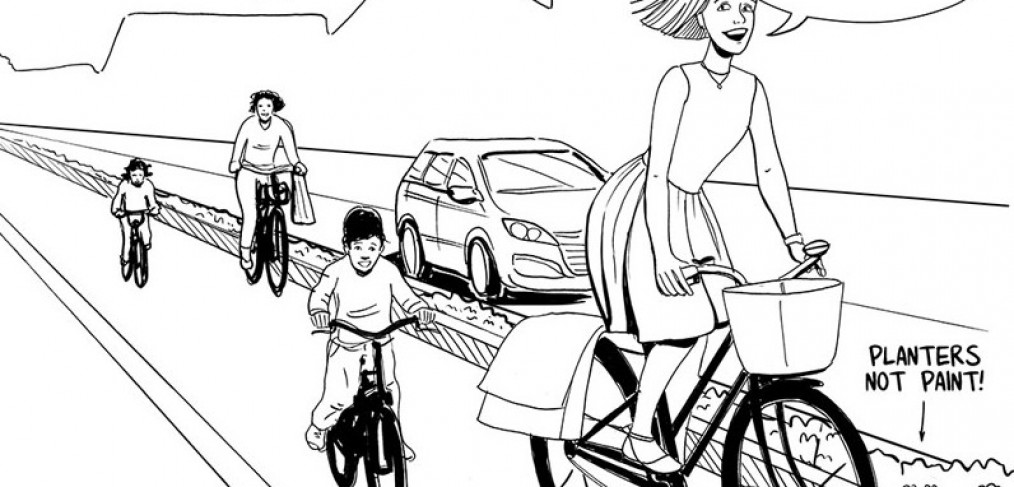
Redesign
When I bicycle around Boston it’s mostly vehicularly. While the rules of the road generally give some order to the roads- I always need be extra vigilant and assume drivers don’t see me.
I’m experienced, follow the rules of the road, and best practices for bicycling. I can do everything in my power- but there’s no barrier if a driver is inattentive.
It is obvious that there is a better way. 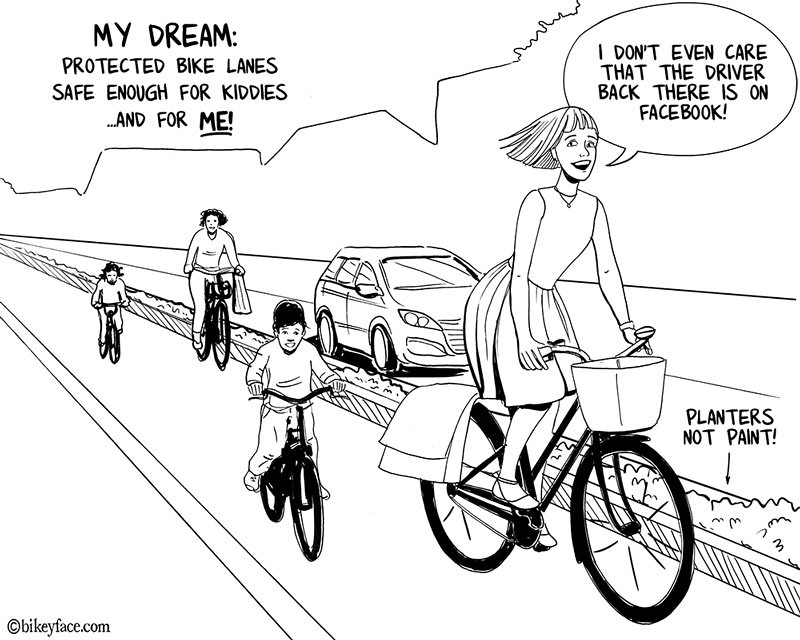 But why so much resistance to making the dream a reality?
But why so much resistance to making the dream a reality?
No amount of education can fix an unequal match of people riding bikes next to cars. And only re-designing the roads will invite more people to ride a bicycle.

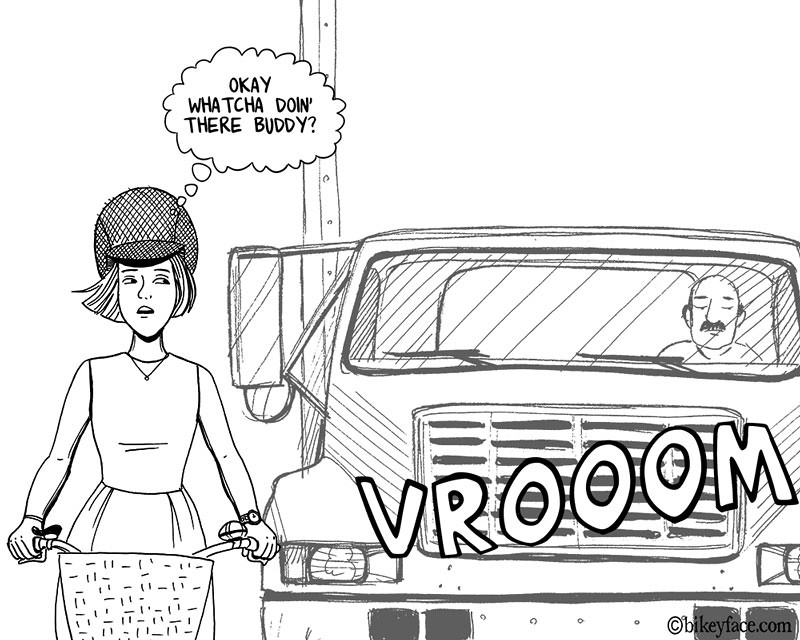
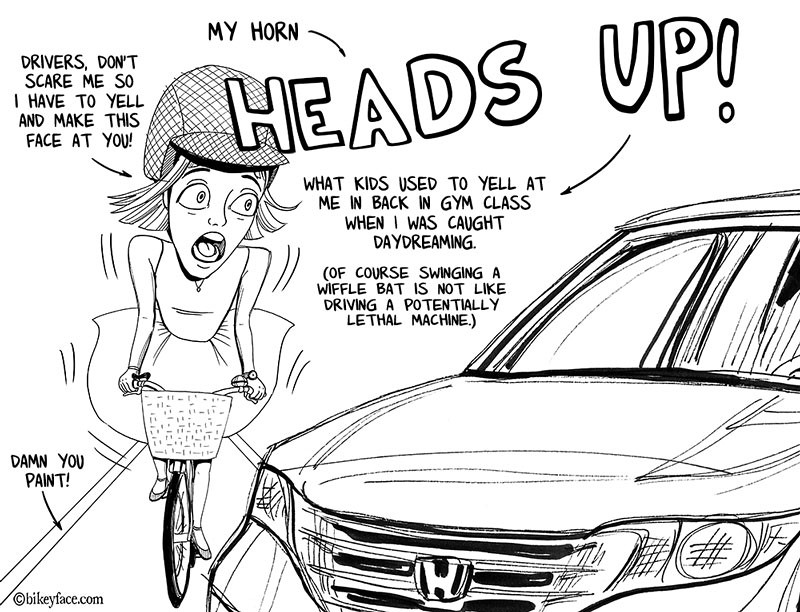
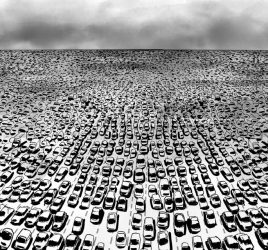

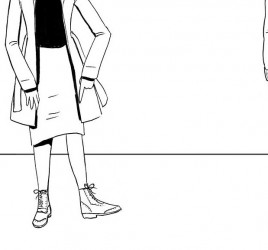
Agree 100% And I’m always disappointed by the way people get so caught up with their own particular approach to safety. E.g., people claiming that helmets aren’t necessary because Dutch cyclists don’t wear them: what we need is good infrastructure. Well, why can’t we advocate for infrastructure while also wearing helmets? I think sometimes that people who spend a lot of time biking think these arguments through so many times that they decide there is only one possible conclusion: whatever they are doing is the only answer.
Also the “investment” needed to build bike infrastructure is big only when you look at it as a standalone effort. Rolled in with other road construction, it is a minor cost. The most important thing is that there be an attitude shift in the planning stage, so bike infrastructure is included as part of any new project, or significant renovation.
Wow, the nonsense of John Forester still lives on in the U.S., doesn’t it? I’m amazed so many hardcore Vehicular Cyclists bother reading your blog, it must just enrage them! Or do they just come here to gripe?
I wouldn’t mind so much, but none of them can come up with a good argument against proper cycling infrastructure, all they usually offer is just tired old stuff about junctions – which the Dutch solved decades ago.
If cycling infrastructure was dangerous, the Netherlands would be the most dangerous place to ride a bike. But it’s not, it’s the safest. The Earth isn’t flat, Foresterites, stop insisting it is!
The problem isn’t with bike infrastructure per se. It’s with the bad bike infrastructure being promulgated but infraphile. What I see proposed and implemented over and over again are short bursts of good intentions with no idea about what to do with cyclists when the eight blocks of two way cycletrack runs out. By the way, two way cycletracks are all the rage in the US now and in Europe, they highly recommend against them. Or we get people who think it’s a Great idea to hide cyclists behind parked cars. I can personally attest to why that idea stinks, and I wasn’t even doored by a passenger exiting a car. Another problem is that no one in this country seems to be willing to spend money to educate people about what to do when the bike lane ends, what anyone’s rights and responsibilites are. When I get away from the city, how do I travel to the next town twenty miles away? Or does the infrastructure advocacy not consider the cost of such things? Somewhere, sometime, bicyclists must integrate into traffic. It cannot be helped.
There certainly are people out there (“infraphiles” as you call them) who will cheer and whoop about anything bike-related, but I’m certainly not one of them. I’ve written many times about bad cycling infrastructure in London and Berlin, and what needs to be done to make it right. I’ve clashed with both VC evangelists and the infraphiles many times.
But that doesn’t change the fact that most anti-infrastructure arguments are regarding problems which were solved long ago, such as junctions (which are perfectly safe, with good design) or broken glass (which needs street-sweepers, just as any other bit of road does).
As for non-city cycling, David Hembrow (A View from the Cycle Path) has written many times about rural cycling, and how cycling can be made safe and attractive between towns. Although the majority of cycle campaigning is done in the city, it doesn’t end there. It’s just that the majority of cycling takes place in cities, as that’s where the majority of people live.
So I join you in criticising badly-designed infrastructure, absolutely I do. But let’s not throw the baby out with the bath-water, and claim that *all* cycling infrastructure is therefore dangerous. The Dutch have shown us what to do, and that it works.
I kind of divide the debate here into two camps.
The infraphobes who don’t want bike infrastructure.
The infraphiles who want infra structure.
The infraphiles see bike infrastructure as the salvation of bicycling. There will be separated, dedicated bicycle roads everywhere. Everyone will know how to use it and drivers will know what it’s for and will respect it. Politicians will immediately see the logic of such safe bicycle routes and will immediately vote money to build it and maintain it and once that is done, everyone will flock to use it and we will become the Netherlands and Copenhagen all at once.
The infraphobes HATE HATE HATE infrastructure with a purple passion. They see it as a means of segregating cyclists from the street which by law and custom dating back to before Rome is just as much theirs as the oxcart and the tractor trailer.
Except. I consider myself to be an infraphobe. But not a blind infraphobe. I see the need for safe bike ways. They have been promised to us for decades. At least thirty years by my reckoning. What we get instead of safe bikeways is a little Magick Greene Paint splashed around; some two way cycle tracks, a design so unsafe that even Europe has shunned them; bike lanes that hide cyclists behind parked cars; “protected” bike lanes that are little more than extensions of the sidewalk. These bursts of good intentions run for, at most, two continuous miles before it runs out. There is one here in Baltimore that goes around the Inner Harbor and is a favorite place to stroll and see the sights. Another burst of good intentions over on Fallsway is some Magick Greene Paint which extends for the entire street frontage of My Brother’s Keeper, not even a half block; I actually think someone spilled some paint and rather than clean it up the created a designated bike lane.
So I am opposed to bad bike infrastructure. And I am also in favor of educating both cyclists AND motorists of their respective rights and responsibilities on the road. Because once the good intentions peter out at the end of the next block, the cyclist has to reintegrate back into traffic.
As I am often told, “Rome wasn’t built in a day.” and “It’s a start.” and “They mean well, but we’ll work out the kinks.”
What I find from infraphiles is this. We want bike infrastructure and we need it right now. It’s becoming too dangerous out there. They are doing it in the Netherlands and in Copenhagen. Why can’t we do it here?
But what is often missed in this plea is that they didn’t just wake up one morning in Netherlands and Denmark and decide, “You know what we need? A good way to get around on bikes. Let’s do that.” No! They spent decades building the infrastructure for the infrastructure. They went about the task of educating road users both behind the wheel and on the bike about what was needed. And they built a political consensus for this. It didn’t hurt that their gasoline taxes made fueling their cars a less than attractive choice when compared to hopping on a bike for a short ride. And that is another thing. Netherlands and Denmark are small densely populated counties. This country, gosh, forget this country, the Commonwealth of Massachusetts is relatively sparsely populated once you get away from Boston area. Wait til you get to Indiana, Kansas, Texas.
About thirty years ago, motorcycle safety was a big concern. Here we had legal road users who were harassed, pushed around, and marginalized. A campaign was started to educate all road users that bikers were out there and they had every right to the road that cars did. “Kill a biker/Go to jail.” Sound familiar? And for the most part it’s worked.
More recently, we have become concerned about the safety of road crews, police, and road service people. A campaign was started to get people to slow down around construction zones, around police, and around tow truck. I have seen signs on some of the interstates “Stopped Vehicle/Move Over and Slow Down/ $10,000 fine 8 Years in Jail” We recently drove from Baltimore to Boulder CO and back and I can report that for the most part that campaign is working, too.
What do cyclists get? The death of a cyclist warrants and average $850 fine and one driving point. The recent tragedy in Boston, the truck driver was let got without even a ticket after he killed a woman who was legally operating her bicycle in the bike lane. If I understand it correctly, she was already there when the truck pulled up on her left. If I am correct in my understanding, the most common cause for killing a cyclist, “I didn’t see her” was employed to which he added “I didn’t even know I ran over her.” Oh! Well! Then it’s OK.
And with all that, infraphiles want infrastructure and they want it now and it seems reasonable in light of that tragedy and they don’t want a penny spent on education or building the political will for it. They want the electorate of the city fathers to spend quite literally BILLIONS in the City of Boston alone, forget about the metro area, for bicycle infrastructure. Yes Billions because that’s what it will cost. A national education program will cost tens, maybe hundreds of millions. And that must be spent first.
Suppose education had worked? Suppose the woman had been at the stop line front and center when the truck pulled up behind her? He would have had to have seen her. He would have had to wait for her to go when the light turned green. It works. I know. I sometimes get a horn, but I smile and wave because really what are they going to do except wait for me to move along? And even in Maryland where we have Mandatory Bike Lanes, city and county police alike have complimented me on my cycling. Because it is safe and predictable. The POLICE!
But when you get to trying to convince the We the People that we need to spend money for safe cycling, they wonder, “I see a new bike lane down they street and signs saying to Share the Road and I see bridges falling down potholes everywhere and money being wasted on boondoggles like the Big Dig and you want me to earmark Billions for more bike lanes?” Besides. You bikers don’t pay taxes or insurance or have a license. All news to me.
And therein lies the need for education. How to do it right. Why we do what we do. And yes we do pay taxes and we do have insurance (if we drive, have homeowners insurance or renters insurance) and we don’t need a license to use the rights of way.
But instead you get stuff like this from Jeff Jacoby. I read this twice and I cannot believe that he actually believes half of what he wrote here. And I can’t believe that the Boston Globe allowed their good name to be put above it.
http://www.bostonglobe.com/opinion/2015/09/01/boston-roads-aren-meant-for-bicycles/a6RRmhYUEJgHYwHnWsSJhO/story.html
Here in Maryland, they recently (in the last 5 years or so) opened a toll road called MD200. It was supposed to include an integrated bike way for it’s entire length. When budgets got tight, they wanted to find ways to save money on this $4000M project. The first thing they cut was the $4M bike way. That’s 0.1% of the budget or one cent for every ten dollars. After all was opened, they promised to designate a parallel route in its place. We are still waiting.
And that is the political will that’s missing, and which must be built for building truly safe bike ways.
You, sir, are wrong on the internet. Rather than match your diatribe point for point, I suggest that you look at the resounding success of Effective/Vehicular/Savvy cycling by itself from about 1974 to 2004 at suppressing ride share and failing to increase bicycle safety. Maybe it works in theory, but that’s not where we live — in the real world most people don’t like it and won’t do it. We also have the example of the Dutch and the Danes to see that there is a better arrangement that works in practice with real people on the scale of nations. Oddly enough, Massachusetts is smaller, more populous, and denser than Denmark, while the Boston-Cambridge-Somerville blob has comparable size, density, and demographics to Groningen, where the cycling ride share is something like 50% (and the rest of that is largely transit and walking).
Note that I am a reformed Vehicular Cyclist. I spent years trying to convince other people, and pretty much failed. There are some good bits in there, and it is helpful at the individual scale if you want to ride today, but their policy prescriptions are utter unadulterated festering crap, and a proven failure.
You mention deal with the real world. But the real world doesn’t have bicycle infrastructure going where I need to go. How does one handle that? When the two miles of dangerous two way cycle track runs out,how does the cyclist reintegrate into traffic. With the “not a dime to education” mindset, no one would know. I would need to drive my car to the start of the two miles of good intentions, ride two mile, turn around, go back, hoping to heaven that no one pulls a rolling right turn across the cycle track, put my bike back into the car then go to where I really wanted to go.
As I said above, the problem isn’t infrastructure, its the lack of will to build the base in favor of infrastructure among those who will pay for it while totally ignoring the need to deal with what we have now.
I am all for what you want. I just think we need to deal with we have. And you don’t see the need for that. That means we are at cross purposes. I guarantee that your methods will not get the infrastructure we want and need and just make the Jacobyites angrie because they will put up money for more Magick Greene Paint and think anything else is a waste of money. And it will get more people killedbecause the will continue to stop in that bike lane next to the turning tractor trailer instead of in front of it or behind it in the lane because infrastruct
Exept you didn’t even read what I wrote. What’s the matter, TL;DR?
In summary, bad infrastructure will continue to kill people. Good infrastructure is expensive and will take a long time of educating the public for it’s need. So the idea of billions for infrastructure and not a dime for education dooms any attempt to emulate Dutch/Dane experience to absolute failure. No one will want to pay for it.
And let’s just imagine if we suddenly do get Dutch Danish infrastructure, by a stroke of magic (since your plan depends on magic paint to keep most people safe) when the lane run out and you still need to get somewhere where the infrastructure isn’t wouldn’t it be helpful to know how to safely and predictably operate in traffic. Oh but education is useless. Not a dime for education.
But since I don’t believe in magic like you do, I know that I live in the here and now. So I operate in traffic. And it’s helpful to know how to do that. But with not a dime for education, I’ll remain all alone out there.
in the here and now, education is essential. To get where you want to be … and I am with you on that …. education is essential. And once infrastructure is installed, education will remain essential. If you think the Dutch and the Danes accomplished what they have without educating people then you just live in a dream world where Magick Greene Paint and plastic stick keep people safe.
Education without changes to the infrastructure is a pipe dream. “Education” has been our answer to cycling on streets since I was a kid, and it got us nothing but declining ride share and declining safety. Scare quotes for “education” because of the two problems that (1) it’s always some other government agency’s problem, so it doesn’t really happen or it’s done poorly (“share the road”, clearly a message for those scruffy cyclists that are in my way, right?) and (2) people (drivers, in particular) are resistant to being educated. I think you are imagining that education would be done right, and of course everyone would quickly see the wisdom of being educated and sign right up, and the educated style of cycling would be completely comfortable popular if only people would take the time to learn it. It’s that last bit that’s a particular problem. (And also, Forester kinda fudged his interpretation of the crash stats in places, that’s another problem — see https://dr2chase.wordpress.com/2013/11/10/forester-fudges-figures/ if you don’t believe me. But you knew this already because you’re educated, right?)
And nobody has said “not a dime for education” except you. That’s your straw man. And we have plenty of money, as soon as we quit pretending that we’re poorer now than we were back in the 70s and 80s, back when the Dutch started to build their stuff.
I’d love to see billions spent on bike infrastructure, but we could get big improvements for less. Start with the worst bits and improve them, and iterate. Each time we clear out a safety/comfort obstacle we’ll get more people biking, and safety-in-numbers will do a little more to help us. I don’t know the exact shape of the numbers-safety curve, but I know that it goes up, and once you get to Dutch levels of cycling it lands in a nice place.
You are arguing that infrastructure, even poor infrastructure alone will be sufficient and that with infrastructure will come the knowledge and understanding that will lead to better and safer infrastructure. And you seem to believe that those like me want to improve cycling and cycling safety through education alone. In fact I am of the opinion that education needs to be the immediate focus and it must be two pronged. (1) cyclists need better tools for surviving in the environment as it currently exists. Even once goals are met, infra will not be everywhere and they will still need those tools, like being not in blind spots of right turning trucks and how to prevent right hooks and sty off the sidewalks. (2) motorists need to be educated about how to treat cyclists. We aren’t pests to be dismissed. And the myths about how licensing, registering, and insuring cyclists will make everything better. And the need to actually build infrastructure. We need to do what the Dutch and Danes did to educate the non-cycling road user about the need to spend the money. They don’t want to spend it now. Just stamping our feet and demanding isn’t working either and hasn’t worked in the last 30 years. (3) and yes, get good safe infra put in. Door zone bike lanes are not safe. There is where education will have immediate impact: cyclists will stop using them and drivers will know why.
I think its a cart/horse thing. I think the horse is education … real shoved down your throat education of the sort we saw work for motorcyclists and road workers. Then bike lanes will follow. Gasoline taxes will need to rise and yes maybe even a road tax (which there isn’t one now, Jeff Jacoby). Motoring infrastructure will need to be repaired and with those repairs, safe infra will be designed in.
We’ve been doing “education” of the vehicular sort for the past 40+ years, most cyclists hated it, and motorists ignored it. I don’t think that repeating the “we don’t want to spend the money” claim helps anything; it simply reinforces the beliefs of the yahoos who don’t want to spend the money, and irritates those of us who do. Your casual flinging around of the word “billions” is also a little dubious to me — that normally leads me to believe that the thing you want most is to not build infrastructure, rather than to save money.
Though I absolutely agree that there are many things that drivers need to learn, most of those things are not pleasant for drivers to hear, and that will lead to them not listening — and the ones we most want to listen (the Jacoby-agreeing buttheads) will be most likely not to listen. If you combine our failed history of road-use education and the (documented and statistically measured) tendency of buttheads to dig in when presented with information contrary to their world view, you get to where I am on “education”.
The advantage of infrastructure is that even here in the US it actually does work, both to attract people and (somehow) to increase safety. We can see that in NYC and in Cambridge and Somerville. I agree about the problems with intersection conflicts, but I think you discount the possibility that safety-in-numbers might be enough to offset that. Also understand that I’m not expecting nation-wide adoption of Dutch-style cycling — I think we should focus our efforts where they will do the most good, and let good(-enough) examples lead the way.
By-the-way, if you were actually looking for a way to spend a billion dollars on bike infrastructure in Boston, that could quite plausibly replace street parking with garage parking for around 40 miles of roads (the largest part of that number is the cost of the land for the parking garages, but Boston also provides the opportunity to build taller and to use the lower and perhaps upper floors for other useful purposes — my estimate depends on 500 spaces/mile, $20k/space construction, 500 space/acre garage, $15mil/acre land). 2-sides 8-foot wide bike lanes with zero chance of dooring on 40 miles of street in Boston would be pretty cool, no?
I see a little callback to the woman killed last month on Mass Avenue by a semi.